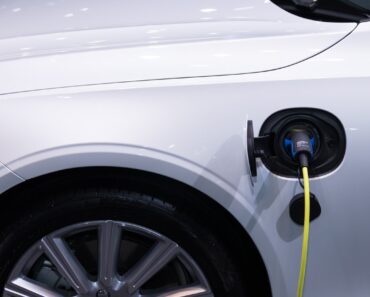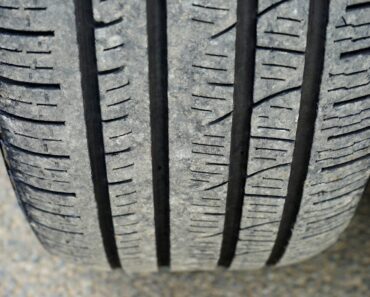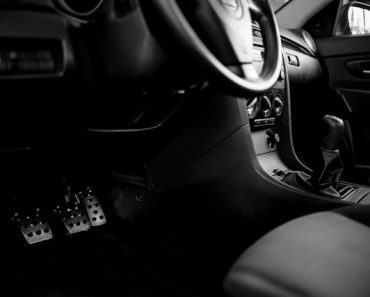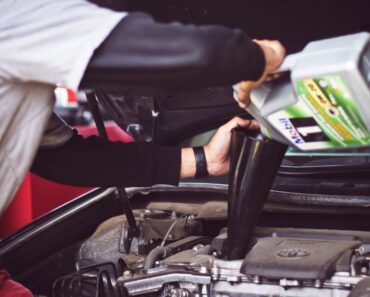Scraping the bottom of your car can be an unnerving experience. Whether it happens while driving over a speed bump too quickly, hitting a pothole, or navigating a steep driveway, that sudden scrape can leave you wondering what damage might have been done. While not every scrape will lead to severe damage, it’s important to understand what can happen when the underside of your car makes contact with the ground. In this article, we’ll explore the potential consequences of scraping the bottom of your car, how to assess any damage, and provide tips to avoid future scrapes.
What Parts of Your Car Are at Risk?
The underside of your car, also known as the undercarriage, houses several critical components that can be vulnerable to damage when you scrape the bottom. These include:
- Oil Pan: The oil pan is located at the bottom of the engine and holds the engine oil. A scrape can puncture the oil pan, leading to oil leaks.
- Exhaust System: The exhaust pipes and catalytic converter run along the bottom of your car. Scraping these components can cause dents, cracks, or disconnection.
- Fuel Tank: Although it is often protected, the fuel tank can be damaged in a severe scrape, leading to fuel leaks.
- Transmission: The transmission is located near the engine and can be affected if the undercarriage takes a hard hit.
- Brake and Fuel Lines: These lines run along the bottom of the car and are susceptible to being nicked or cut by a severe scrape.
- Chassis and Frame: Scraping can cause dents or structural damage to the car’s chassis or frame, which may affect the car’s alignment and safety.
- Plastic Shields and Skid Plates: Many modern vehicles have plastic shields or metal skid plates that protect the undercarriage. Scraping these shields can lead to cracks or breaks, reducing their effectiveness.
Immediate Consequences of Scraping the Bottom of Your Car
1. Minor Cosmetic Damage
In some cases, a scrape might only cause minor cosmetic damage, such as scratches or small dents to the protective shields or undercarriage. While this type of damage doesn’t usually affect the car’s performance, it can reduce the resale value and aesthetic appeal.
Signs of Cosmetic Damage:
- Visible scratches or scuffs on the undercarriage.
- Minor dents on protective shields or skid plates.
2. Fluid Leaks
One of the most concerning outcomes of scraping the bottom of your car is fluid leaks. A scrape can damage the oil pan, transmission pan, or fuel tank, leading to leaks that could cause engine damage or fire hazards if not addressed promptly.
Signs of Fluid Leaks:
- Puddles of oil or other fluids under your car.
- Warning lights on the dashboard, such as the oil pressure or check engine light.
- A noticeable drop in fluid levels when checking the dipstick or reservoir.
3. Exhaust System Damage
Scraping the bottom of your car can damage the exhaust system, including the exhaust pipes, muffler, and catalytic converter. This can lead to exhaust leaks, reduced performance, and increased noise.
Signs of Exhaust Damage:
- Louder exhaust noise than usual.
- Rattling or banging sounds from underneath the car.
- A noticeable drop in engine performance or fuel efficiency.
- The smell of exhaust fumes inside the cabin.
4. Brake and Fuel Line Damage
If the scrape is severe, it could damage the brake lines or fuel lines. This is a serious issue, as it can lead to brake failure or fuel leaks, both of which are dangerous.
Signs of Brake and Fuel Line Damage:
- A spongy or unresponsive brake pedal.
- The smell of gasoline near the car.
- Visible fluid leaks under the car.
5. Alignment and Suspension Issues
A hard scrape can affect your car’s alignment and suspension components, leading to uneven tire wear, handling problems, and a less comfortable ride.
Signs of Alignment and Suspension Issues:
- The car pulls to one side while driving.
- Uneven tire wear patterns.
- A steering wheel that is off-center.
- Noises like clunking or squeaking when driving over bumps.
How to Assess the Damage After a Scrape
If you scrape the bottom of your car, it’s important to assess the damage as soon as possible to prevent further issues. Here’s what you can do:
1. Inspect for Visible Damage
Start by visually inspecting the undercarriage for any obvious signs of damage. Use a flashlight to look for scratches, dents, leaks, or hanging components.
2. Check for Leaks
Look for any signs of fluid leaks under your car. If you notice any puddles or drips, identify the type of fluid (oil, transmission fluid, coolant, etc.) and check the corresponding levels.
3. Listen for Unusual Noises
Pay attention to any new or unusual noises coming from your car, especially from the undercarriage or exhaust system. Grinding, rattling, or hissing sounds could indicate damage.
4. Monitor Performance
Notice any changes in your car’s performance, such as reduced power, poor handling, or a spongy brake pedal. These could be signs of more serious damage.
5. Seek Professional Inspection
If you’re unsure about the extent of the damage or if you notice any of the signs mentioned above, it’s best to have your car inspected by a professional mechanic. They can lift the car and thoroughly check the undercarriage for damage that might not be visible from the ground.
Tips to Prevent Scraping the Bottom of Your Car
While some scrapes are unavoidable, there are several strategies you can use to minimize the risk of scraping the bottom of your car:
1. Be Mindful of Speed Bumps and Potholes
Drive slowly over speed bumps and potholes to minimize the impact on your car’s undercarriage. Approach at an angle if possible to reduce the likelihood of scraping.
2. Avoid Overloading Your Vehicle
Carrying too much weight can lower your vehicle’s ground clearance, increasing the risk of scraping. Be mindful of your vehicle’s weight limits and avoid overloading it.
3. Know Your Vehicle’s Ground Clearance
Understand the ground clearance of your vehicle and be aware of how low it sits to the ground. This will help you navigate obstacles more effectively and avoid situations where scraping is more likely.
4. Take Care on Inclines and Driveways
When driving up or down steep inclines or driveways, approach at an angle rather than head-on. This helps distribute the weight more evenly and reduces the chance of the undercarriage making contact with the ground.
5. Regularly Inspect and Maintain Your Car
Regular inspections and maintenance can help you catch any potential issues early. Check your car’s undercarriage periodically for any signs of damage or wear, and address any problems promptly.
6. Install Skid Plates
If you frequently drive in areas with rough terrain, consider installing skid plates to protect your car’s undercarriage. Skid plates act as a protective barrier, shielding vulnerable components from scrapes and impacts.
What to Do If You Scrape the Bottom of Your Car
If you do scrape the bottom of your car, follow these steps to ensure safety and prevent further damage:
- Pull Over Safely: If possible, pull over to a safe location to inspect your car. Turn off the engine and check for any immediate signs of damage.
- Check for Leaks: Look underneath your car for any signs of fluid leaks. If you see any, avoid driving until the issue is resolved.
- Listen for Noises: Start your car and listen for any unusual noises coming from the engine or exhaust system. Pay attention to any warning lights on the dashboard.
- Drive Carefully: If everything seems normal, drive cautiously to your destination and avoid any additional scrapes. Keep an eye on your car’s performance and listen for any new noises.
- Schedule a Professional Inspection: Even if there are no immediate signs of damage, it’s a good idea to have your car inspected by a professional mechanic to ensure that there are no hidden issues.
Conclusion
Scraping the bottom of your car can be alarming, but not all scrapes lead to serious damage. Understanding what parts of your car are at risk and knowing how to assess and prevent damage can help you stay safe on the road. By taking precautions and addressing any issues promptly, you can minimize the impact of scrapes and keep your vehicle in good condition.
Quote:
“Prevention is always better than cure. Take care of your car’s undercarriage to avoid costly repairs down the road.”






